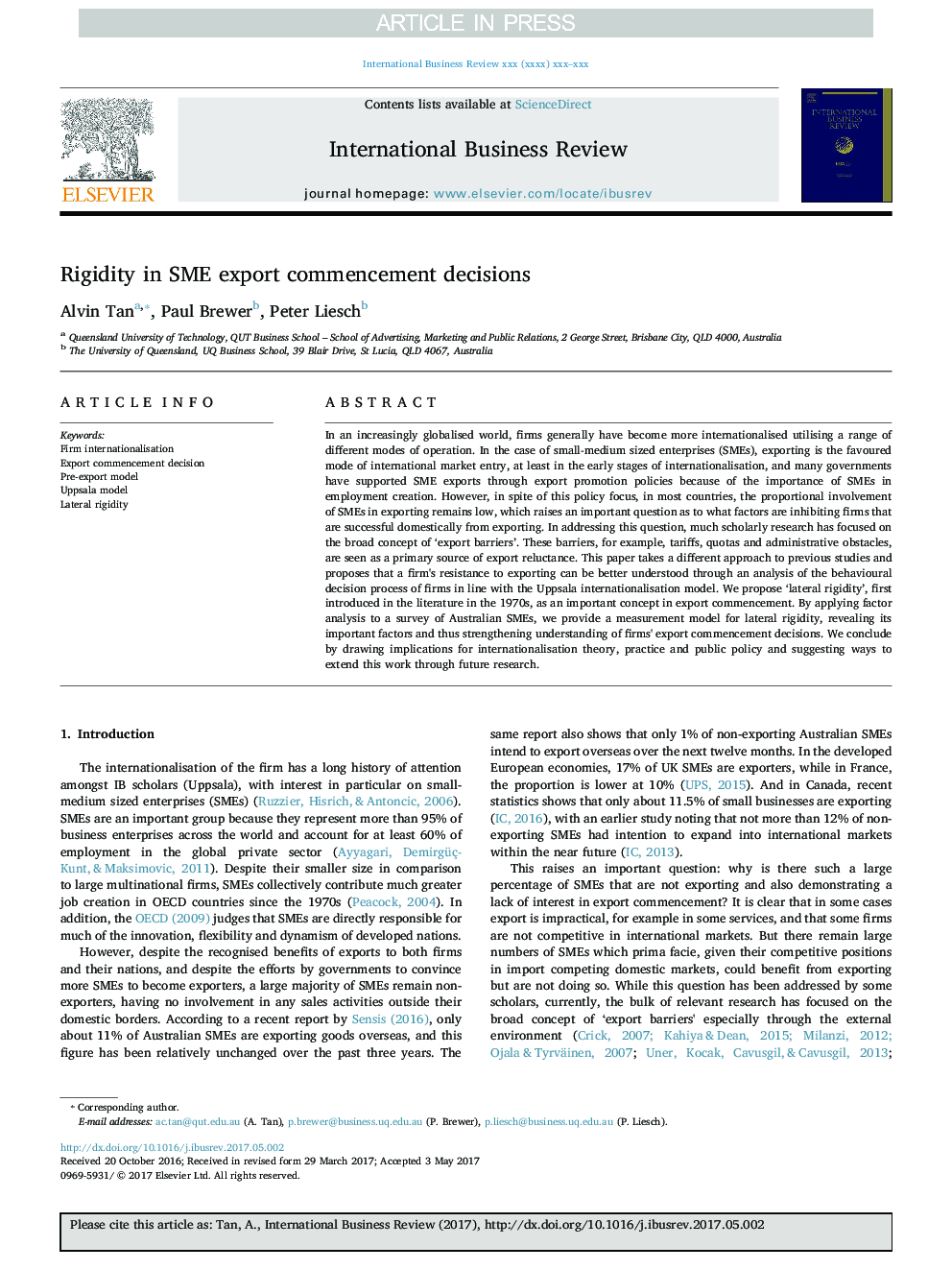| Article ID | Journal | Published Year | Pages | File Type |
|---|---|---|---|---|
| 7412688 | International Business Review | 2018 | 10 Pages |
Abstract
In an increasingly globalised world, firms generally have become more internationalised utilising a range of different modes of operation. In the case of small-medium sized enterprises (SMEs), exporting is the favoured mode of international market entry, at least in the early stages of internationalisation, and many governments have supported SME exports through export promotion policies because of the importance of SMEs in employment creation. However, in spite of this policy focus, in most countries, the proportional involvement of SMEs in exporting remains low, which raises an important question as to what factors are inhibiting firms that are successful domestically from exporting. In addressing this question, much scholarly research has focused on the broad concept of 'export barriers'. These barriers, for example, tariffs, quotas and administrative obstacles, are seen as a primary source of export reluctance. This paper takes a different approach to previous studies and proposes that a firm's resistance to exporting can be better understood through an analysis of the behavioural decision process of firms in line with the Uppsala internationalisation model. We propose 'lateral rigidity', first introduced in the literature in the 1970s, as an important concept in export commencement. By applying factor analysis to a survey of Australian SMEs, we provide a measurement model for lateral rigidity, revealing its important factors and thus strengthening understanding of firms' export commencement decisions. We conclude by drawing implications for internationalisation theory, practice and public policy and suggesting ways to extend this work through future research.
Keywords
Related Topics
Social Sciences and Humanities
Business, Management and Accounting
Business and International Management
Authors
Alvin Tan, Paul Brewer, Peter Liesch,
